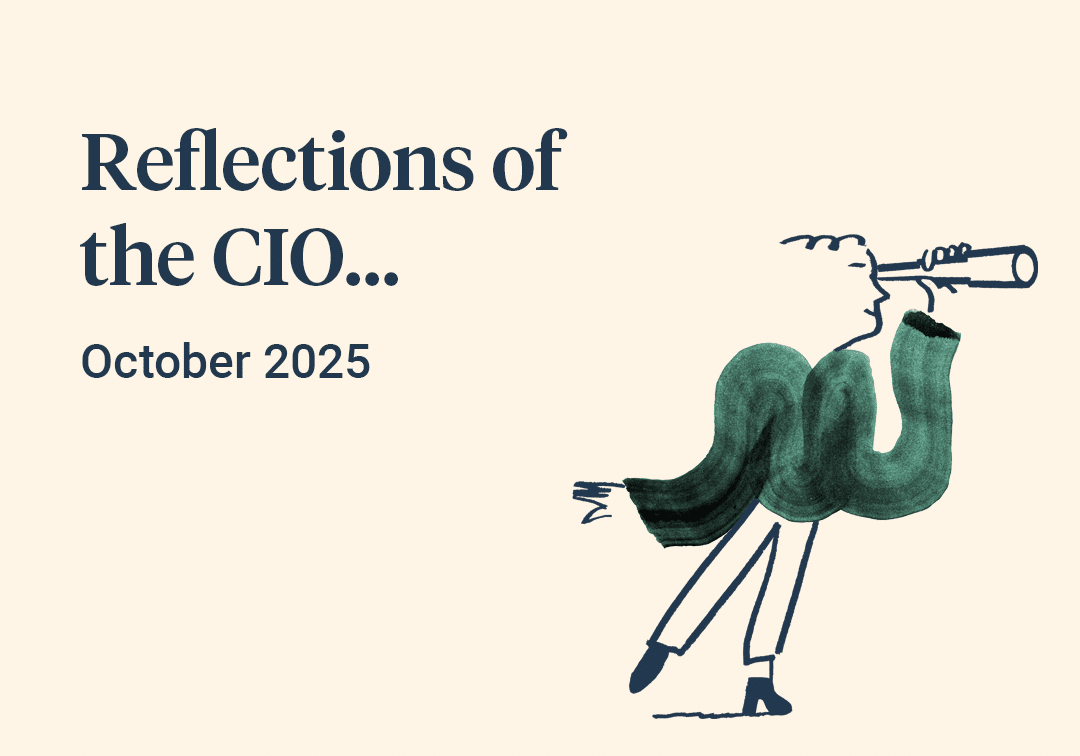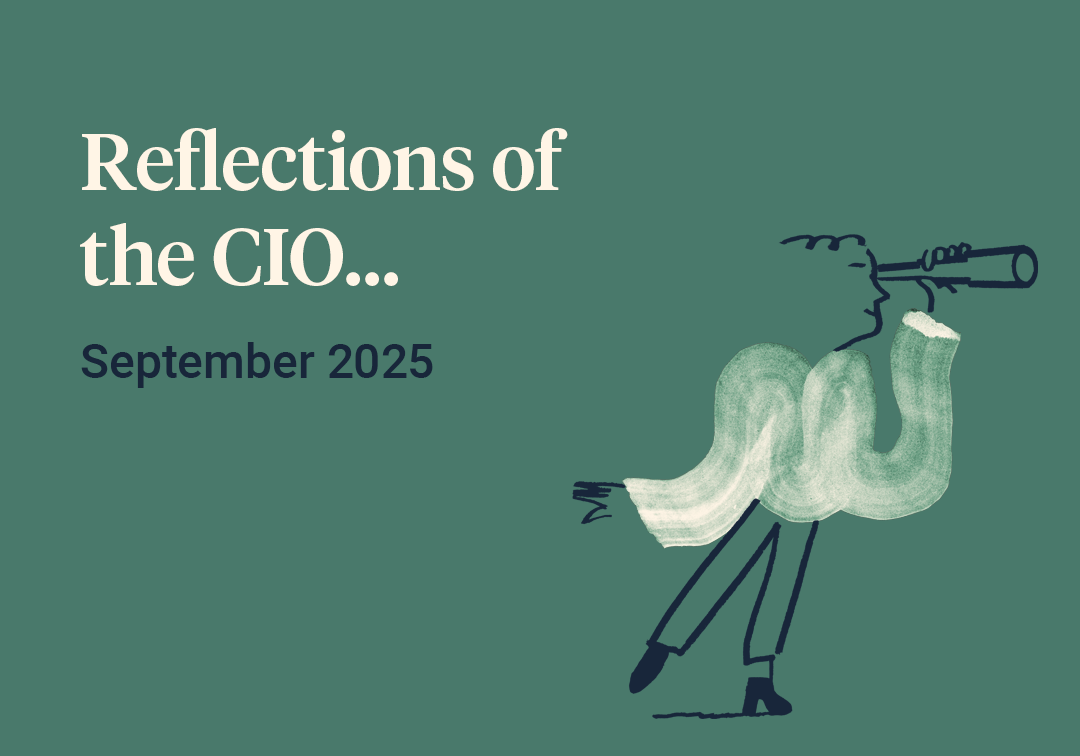July was a strong month for financial markets across the board, with notably few negatively-performing asset classes. This strength was driven by a resilient economy, relatively benign inflation, and little fallout from the gradually increasing US tariff regime. Equity markets were given a boost as strong quarterly earnings reports started to be released. At risk of sounding repetitive, it was the US technology giants that drove this optimism with results that once again exceeded analyst’s expectations. When two heavyweights in this class – Microsoft and Meta – released their results after the market had closed, their after-hours share price surges added more in value than the combined market capitalization of the entire European equity market, underscoring the sheer scale and global dominance of the US tech sector. This fervour played out whilst a string of US trade deals were confirmed, and whilst the average US tariff rate constantly crept up. The market chose to focus on the present though, ignoring the potential impact of tariffs for now, and focusing on the good news elsewhere.
The flurry of trade deals began with the United States striking an agreement with Vietnam, securing a 20% tariff on most goods and a heftier 40% rate on trans-shipments – products routed through Vietnam from third countries. The month progressed with parallel breakthroughs involving both Japan and the European Union, culminating in a set of arrangements that imposed a 15% tariff on most imports, including automobiles. While these rates remain substantially above the 2024 average of 2.4%, the deals symbolised a step away from the brink of escalating tariff wars. Equity markets responded in kind, not so much celebrating the return to free trade as simply breathing a sigh of relief that uncertainty had begun to lift.
The impact on market sentiment was palpable. In the first seven months of 2025, the FTSE 100 gained over 14%, making it one of the strongest major stock markets in 2025. This strength came despite a sharp selloff at the start of April, so called ‘Liberation Day’, highlighting the resilience of equities in the wake of policy shocks. The lesson for investors remains clear: while markets are prone to sharp moves in the short term, periods of volatility can be quickly offset by rebounds as policy continues to be fluid.
Yet while markets rejoiced, warning signs flashed elsewhere in the economic landscape. The US consumer, for so long the engine of global demand, has begun to show signs of fraying. At the same time, companies reported a surge in artificial intelligence adoption—a structural transformation that could eventually reshape the labour market, perhaps contributing to the current malaise in graduate employment. Taken together, these trends serve as reminders that the impressive rallies in equity markets are not a proxy for health in the “real” economy.
Across the Atlantic, UK finances showed increasing strain. The Office for Budget Responsibility warned of a “relatively vulnerable” outlook, projecting that public debt could mushroom to 270% of GDP by the 2070s without significant fiscal adjustment. June saw borrowing spike beyond forecasts, and a shrinking economy in May was driven by slumping industrial production. Inflation, too, crept higher, rising to 3.6% on a yearly basis—its hottest reading since early 2024—raising the chances of stagflation as output falters and prices climb. Still, the services sector offered a glimmer of hope, posting its strongest Purchasing Manager’s Index reading in ten months and hinting at the potential for modest recovery in the months ahead.



